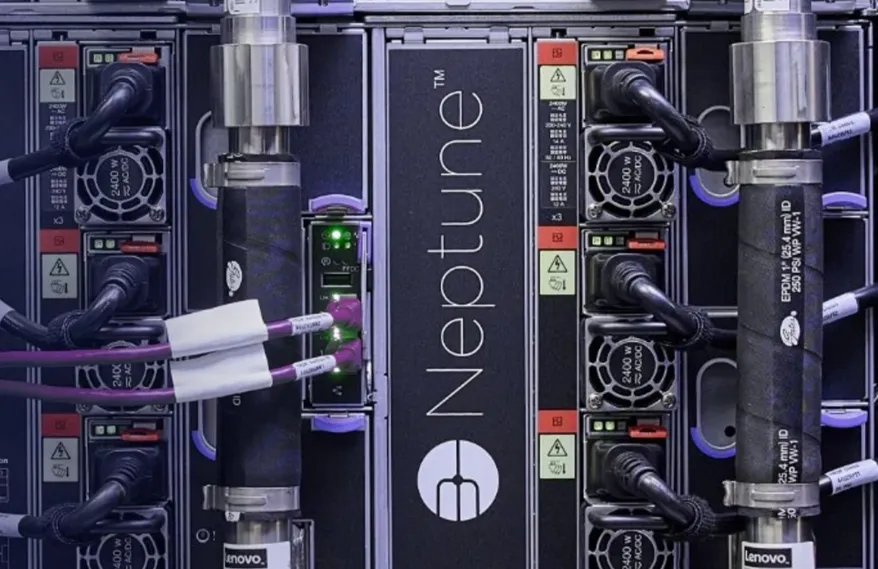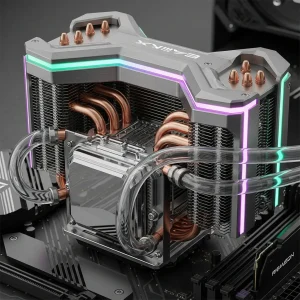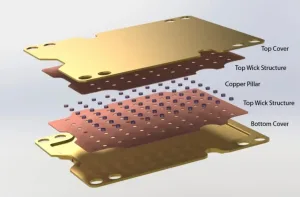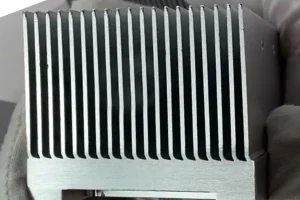Blackwell Overheating And Liquid Cooling Solutions
There have been recent rumors regarding overheating issues with NVIDIA’s Blackwell platform. So, what are the current methods to cool down the system?
As AI technology continues to grow, an increasing number of data centers are opting for liquid cooling solutions. Compared to traditional air cooling methods, liquid cooling (especially Direct Liquid Cooling, DLC) offers significantly higher heat dissipation efficiency. The thermal conductivity of liquid is 50 to 3,000 times greater than that of air, enabling more efficient thermal management in high-density server environments that generate a large amount of heat. Moreover, liquid cooling can reduce overall energy consumption.
Research has shown that transitioning from air cooling systems to liquid systems can reduce facility power consumption by 27% and overall site energy consumption by 15.5%. Another advantage of liquid cooling is that it operates more quietly while occupying less physical space.
In summary, the key benefits of liquid cooling are: high energy efficiency, quiet operation, and space-saving.
Liquid Cooling Solutions Overview
CoolIT Systems (CoolIT)
CoolIT Systems (CoolIT) was established in 2001, initially designing and distributing direct liquid cooling products for the desktop gaming industry. In 2014, the company expanded its focus to designing products for data centers and server OEMs, and it has since become one of the most trusted providers of direct liquid cooling solutions in the market. Headquartered in Calgary, Canada, CoolIT operates three manufacturing facilities in Canada and China.
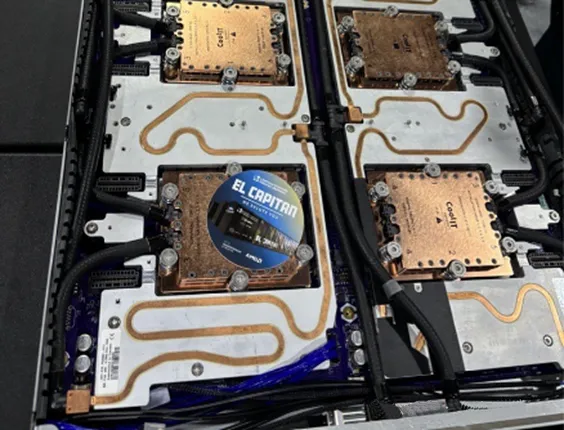
Last week, during the period when rumors about Blackwell overheating circulated, CoolIT Systems (CoolIT) announced the launch of the CHx1000, the world’s highest-density liquid-to-liquid cooling distribution unit (CDU). The CHx1000 is specifically designed for mission-critical applications, particularly for cooling the NVIDIA Blackwell platform and other demanding AI workloads that now require liquid cooling. Patrick McGinn, Chief Operating Officer of CoolIT Systems, stated: “CoolIT Systems (CoolIT) has launched the CHx1000, the world’s highest-density liquid-to-liquid CDU, designed for mission-critical applications and tailored for cooling the NVIDIA Blackwell platform and other AI workloads that now require liquid cooling.”
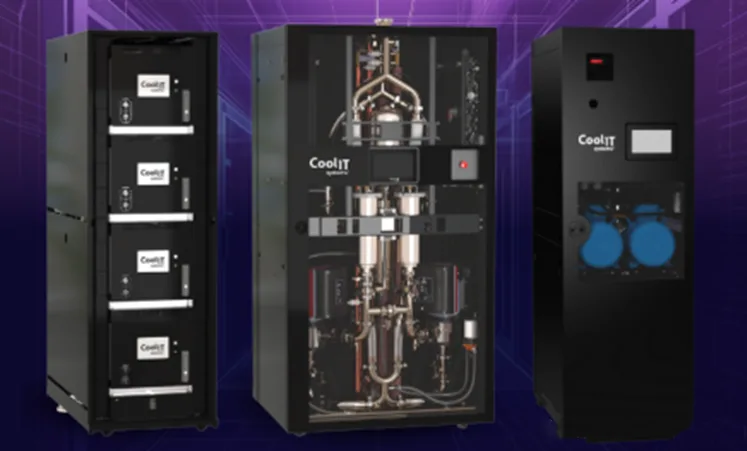
The CHx1000 leverages CoolIT’s over 20 years of innovation in direct liquid cooling (DLC) and has been developed in close collaboration with leading processor manufacturers and hyperscale enterprises. It offers a cooling capacity of 1000 kW, with a flow rate of up to 1.5 liters per minute per kilowatt (LPM/kW), maintaining a close temperature of 3°C. The CHx1000 liquid-to-liquid CDU currently provides cooling for an unprecedented ten NVIDIA GB200 NVL72 platform racks and is fully capable of supporting future AI chips and servers with higher thermal densities. The NVIDIA GB200 NVL72 boasts 30 times faster inference performance and 25 times better energy efficiency compared to its predecessor, making it ideal for large-scale LLM (Large Language Models).
The unit allows for in-row maintenance, featuring front and rear access and on-site replaceable pumps, filters, and sensors without disrupting operations. The CHx1000 is specifically designed to meet the stringent operational requirements of DLC systems. Its high-reliability design includes stainless steel piping, built-in 25-micron filters, and the highest-grade wet materials. Additionally, it incorporates smart control devices that dynamically adjust the cooling liquid’s flow, temperature, pressure, and flow rate to precisely target the chip. The device can be remotely controlled via a 10-inch touchscreen or through multiple protocols, including Redfish, SNMP, TCP/IP, Modbus, and others.
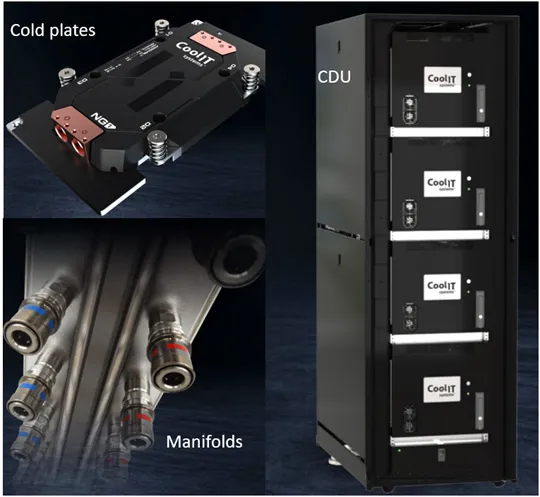
Supermicro Direct Liquid Cooling
Supermicro has introduced its SuperCluster solution, which integrates NVIDIA Blackwell GPUs into a liquid-cooled rack configuration. This setup enhances GPU computing density and features advanced functionalities such as vertical liquid cooling distribution manifolds and improved cold plates for optimal thermal management. The design boosts efficiency and reduces operational costs, making it ideal for large-scale AI deployments. At Computex this year, Supermicro unveiled systems optimized for NVIDIA’s Blackwell GPUs, including 10U air-cooled and 4U liquid-cooled units designed for HGX B200-based systems. The company is also developing an air-cooled HGX B100 system and a GB200 NVL72 rack that accommodates 72 GPUs interconnected via NVIDIA NVLink switches. Furthermore, Supermicro has committed to launching systems based on Intel Xeon 6 processors.
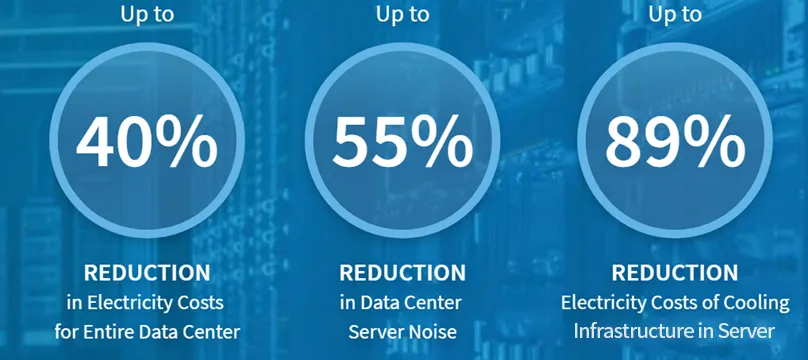
Supermicro Liquid Cooling Rack Solution Components:
Supermicro’s liquid cooling rack solution consists of several internally designed components, including:
Cooling Distribution Unit (CDU)
This unit includes a pumping system that circulates the cooling liquid through cold plates to cool the CPUs and GPUs. The Supermicro CDU integrates two hot-swappable and redundant pumping modules, as well as power modules, ensuring nearly 100% uptime. The CDU offers a cooling capacity of up to 100 kW, enabling extremely high rack density. It also provides an intuitive touchscreen for easy monitoring and control of rack operations, which can be accessed via WebUI and is integrated into Supermicro’s Super Cloud Composer data center management software.
The CDU control system optimizes power consumption while ensuring efficient cooling for all CPUs and GPUs. It also employs effective anti-condensation strategies to prevent any hardware performance degradation.
Cooling Distribution Manifold (CDM)
The CDM is the distribution pipeline that supplies cooling liquid to each server and returns the warmer liquid to the CDU.
There are two types of CDMs:
Vertical
Vertical manifolds are located at the rear of the rack and are directly connected to the CDU via hoses. They distribute cooling liquid to the cold plates on the system and have inlet and outlet hoses at the back of the rack.
Horizontal
Horizontal manifolds are placed at the front of the rack within 1U of rack space.
These horizontal manifolds connect the vertical manifolds at the rear of the rack to the cold plates on systems at the front of the rack, which include SuperBlades and 8U GPU servers. Flexible hoses are used to transport the cooling liquid to the CPU and GPU cold plates and return the heated liquid to the CDM.
Cold Plates
Cold plates are mounted on top of the CPUs and GPUs. The cooling liquid flows through microchannels within the plates, providing highly efficient cooling for the chips.
Supermicro cold plates are specifically designed to minimize hotspots on the chips and achieve ultra-low thermal resistance.
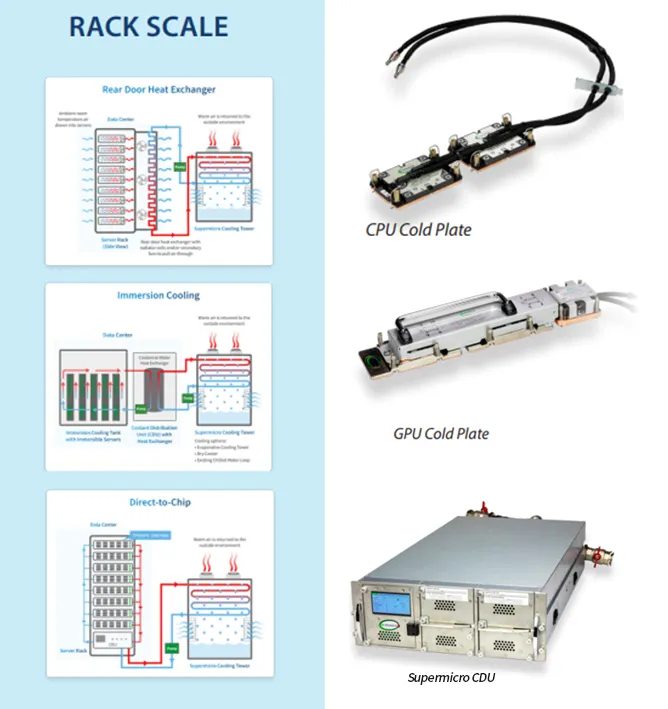
Lenovo Neptune Liquid Cooling System:
The Lenovo ThinkSystem N1380 Neptune is a sixth-generation vertical liquid cooling system designed to efficiently cool high-density server racks, achieving configurations exceeding 100 kW without the need for dedicated air conditioning. The system utilizes an open-loop direct warm-water cooling method, significantly reducing power consumption—by up to 40% compared to traditional cooling methods. Lenovo’s expertise in liquid cooling stems from its acquisition of IBM’s server technologies, establishing it as a leader in the field.
This direct water cooling solution recycles warm water to cool data center systems and maintain the temperature of all server components, reducing the need for energy-intensive system fans during operation. The patented cold plate design, optimized for CPUs and accelerators, maximizes heat dissipation, with current power consumption around 700W and future designs expected to exceed 1000W. The new warm-water cooling design of Neptune™ will enable operation without requiring any specialized data center air conditioning.
